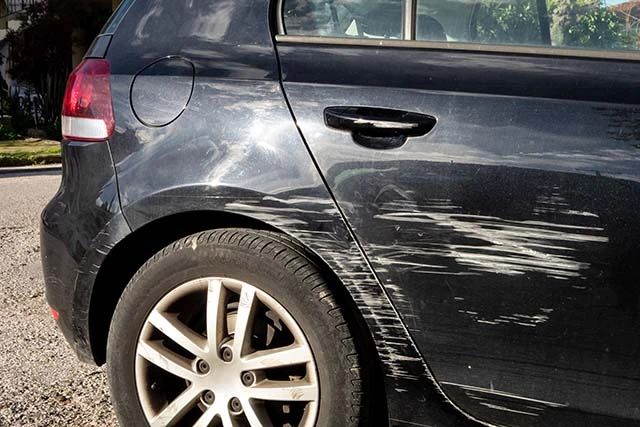If you wish to have joint ownership of a car, then a second person needs to be added to a vehicle title – but how to add someone to a car title? Although the application process differs from state to state, there are some general guidelines you should follow. If you’re one of many wondering how to add a name to a car title, find your answer in the following text.
First of all, you need to check your state’s requirements for adding a person to the car title. You can easily obtain this information online, as well as the form necessary for the application – or you can visit the local DMV office. The application needs to be filled out and submitted in accordance with the state’s requirements and the type of ownership needs to be chosen. The filled application form needs to be brought to the DMV office in order for a name to be added to this document, alongside the original title.
What Is a Car Title?
A vehicle title, also known as a Certificate of Title or a pink slip, is an important document that states who legally owns the vehicle. It is issued by the US Department of Transportation or the state’s Department of Motor Vehicles (DMV) when the car is sold. It’s received from a dealer or private citizen, depending on whether you’re buying a used car or a new one. If you wish to transfer or expand ownership, this document will be required.
Although the exact information displayed in this document varies from one state to another, it typically includes the following:
- The name of the owner,
- VIN (vehicle identification number),
- Weight class,
- Odometer reading,
- Seller’s and buyer’s personal information and signatures.
Why Is It Important to Have a Title to Your Vehicle?
Without a car title, you can’t prove that you truly own your vehicle. Not only that it holds the identifying information about the car, but it’s a necessary document when you wish to re-register your vehicle, register it in another state or country after moving, or even sell it. If your name isn’t on this document, you have no legal rights to it.
That is why it’s important to store your title carefully. It shouldn’t be kept with other documents in your car but guarded where it can’t get damaged. For peace of mind, you can look if your state can offer electronic titles. Still, if you end up losing this document, know that it should be possible to obtain it from your local DMV office for a certain fee.
How Does the Certificate of Title Differ From the Vehicle Registration Certificate?
Having your car registered and getting a vehicle title is not the same thing. While titles prove the ownership of a vehicle, a registration certificate is a document that states that the vehicle can be legally driven on public roads. As you’re probably well aware, driving without registration is not legal, and a vehicle needs to have a title in order to be registered.

Who Has the Title to a Vehicle?
When the new vehicle is sold, the original title is provided by the dealership company. If it’s the pre-owned vehicle in question, then the title must be transferred between an old and new owner through forms submitted at the state DMV.
However, with leased and financed vehicles, the situation is a little different. When you’re leasing the car, the lessor holds the ownership of the car. Only if you decide to purchase the vehicle after the lease ends will the car be retitled. On the other hand, if you took a loan for it due to overly high car prices, then the lender will hold the title until your debt is paid off in full. That means that the document you’ll get after the purchase will hold the lender’s information.
Why Would You Want to Add a Name to the Title?
In most states, you can add at least two names to the vehicle title. There are many reasons why people choose to add the name to this document and share the ownership of the car. Some who have recently married want shared ownership with their spouses or wish for another family member to utilize a car regularly. Others wish to give the vehicle to a friend but retain the ownership. Whichever your situation is, know that the process of adding a name to the title is not complicated. However, certain procedures need to be followed in order for this transfer to be legal.

How to Add Someone to a Car Title?
Let’s check what you need to do to add someone to a vehicle title.
Check for the State’s Requirements
The procedures and requirements vary from state to state, so you’ll need to check with your local Department of Motor Vehicles. Keep in mind that each state has a separate Department of Motor Vehicles office or a government agency that is equivalent to it, where you can add the name on the title, as well as register the vehicle, get a driver’s license, and so on.
Try to find online resources for the state in which you’re currently residing. Simply type the state’s name and Department of Motor Vehicles, and search through their website for a form needed in order to share the ownership.
Notify Important Subjects
If you’ve used a loan to purchase the vehicle, make sure you contact your lender first. With some lenders and lending companies, adding an owner can change the loan terms, which is why they won’t allow it. At the same time, don’t forget to notify your insurance provider about this change. In some states, you’ll even need it to provide proof of insurance for the second owner before requesting for their name to be added.
Fill Out the Application
Fill Out the Application
Once you find the correct form, you need to complete it. In most cases, you should be able to do it online or at your local DMV office. Keep in mind that both you and the new owner will need to sign the form. At the same time, ensure that you’ll still be listed as the vehicle owner. In some states, signing will be required before filling out the application, which needs to be done directly at the office or in front of a notary.
Submit the Application
Once the application form is filled, you need to bring it to the local Department of Motor Vehicles office alongside the original title, proof of payments for any additional fees, and proof of insurance.
While in some states the additional driver can be added to your registration, in others, there need to be two separate vehicle registrations. Check with your local DMV office to know what your next step is.
Different Types of Vehicle Co-Ownership
When you’re declaring multiple ownership of a vehicle, there are usually three possible options you can file for. They are:
- Tenancy in common,
- Joint tenancy,
- Tenancy in entirety.
Tenancy in common implies that the car is a part of the estate for both owners and, therefore, can be inherited by the named heirs. Joint tenancy, on the other hand, entitles both co-owners to survivorship. It means that in the case one of them dies, the other co-owner gets full ownership of the vehicle.
Tenancy in entirety occurs with married couples, and it implies both owners being treated as one entity. In the case one of the spouses dies, the ownership will vest to the surviving one, not become part of the estate – similar to joint tenancy.
How to Sell a Car With Two Names on the Title?
With joint tenancy, the signature from both owners is required so the ownership can be released and transferred to a new party. With tenancy in common, a signature from at least one owner is needed. You’ll be able to differentiate what type of ownership you have by looking at a conjunction stated in your title. If there is an “and” between the names, it’s joint tenancy; if there’s “or,” it’s tenancy in common.

Different Types of Car Titles
There are many different types of titles a car owner can meet over time. Take a look at the table below to see the most common ones.
| Clear title | The best type of title to have. This indicates that there are no debts of any kind on the vehicle that would prevent the sale. |
| Salvage title | Once the vehicle loses more than ¾ of its original value due to subsequent repairs or accidents, an insurance company issues the salvage title. It can greatly reduce the value of the vehicle. |
| Junk title | Issued for vehicles sold to a junkyard. |
| Reconstruction title | Insurance companies issue this title to a vehicle that has undergone significant transformations or repairs. It can also be issued at a place where the repair has occurred. |
| Bonded title | This title protects the buyer of a vehicle with missing ownership documents in case there is an ownership claim in the future. |
| Water damage title | Used for cars that had sustained water damage due to floods, hurricanes, thunderstorms, and the like. |
Can the Type of Title Change Over Time?
As you can see from the table above, the title can and will change depending on the vehicle’s condition. However, this change doesn’t have to imply a lost value. For example, a car with a salvage title can gain a rebuilt title if you’re willing to repair the damage on the vehicle.
However, keep in mind that you need to rebuild the car in accordance with your state’s DMV policy to ensure it’s road-ready and safe to drive. It means the car can’t have a bad spark plug – replace it with Autolite Iridium XP, brakes that don’t work, or even bad license plate bulbs, I always order SEALIGHT 194 LED Bulbs.
You need to provide paperwork for all the repairs, no matter how small they seem. If you’ve replaced the U-joints, for example, or changed the water pump, you’ll need to have proof of it. Alongside the paperwork, you need to submit a request for a rebuilt salvage vehicle exam and pay a certain fee.

Make Sure the Adding Another Name to the Title Is Valid
As you can see, adding someone to the vehicle title is as simple as it gets, but that doesn’t diminish the importance of the process itself. If you truly wish for another person to share the car ownership with you, for whichever reason, make sure to follow this guide, as well as your state’s requirements – and avoid any possible title-related headache for you or the new co-owner down the road.








